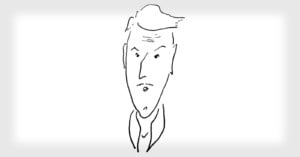
Regarding Photographs: And In Conclusion…
This is the end of my essay series on how we see and think about photographs. While I could certainly ramble on more or less forever, this is a good place to stop.

This is the end of my essay series on how we see and think about photographs. While I could certainly ramble on more or less forever, this is a good place to stop.

In the previous essay I set aside a category of ethical issues around photographs. Specifically, the issues that arise from the very existence of the photo, rather than from the meaning of it. Issues around consent, and around extraction (who gets paid.)

In the ongoing spirit of applying my new(?) model of thinking about photographs to old questions, let’s take a pass through “ethics” to see if anything interesting shows up.

I’ve been writing for a while now on this single idea: that photographs transport you, in a sense, to the scene of the photograph; that you therefore react to photographs as if you were there, viscerally; that you react specifically by imagining the world around the photo; and finally that this imaginative reaction, this meaning you make, is of central importance in understanding a photograph.

If you’ve been following along for any length of time, you might be starting to wonder if the author here even owns a camera, and if so, whether he can work it at all. I can! I really do, and I can! I mean, kinda, anyways.

The previous essays in this series have tried to develop some ideas about what happens when people look at photos. The realism, that mass of realistic detail, causes (I claim) a visceral reaction: we feel, we react, we think, a little as if we were transported by the photograph into the scene itself.

In the previous essay on reading photos, I looked at how things we know, mental baggage we have accumulated besides just memories, affect what we see in a photograph. Things like cultural background, political beliefs, movies we’ve seen, or books we’ve read.

In the previous essay, I introduced a couple of imaginary photographs. The first, an old woman celebrating her birthday with family and friends; the second a photograph of a man seated in a chair, attentive to something out of frame.

This is the third essay in this series, and it begins a smaller sequence of notes running over the ways we as viewers make sense of pictures. We spend, I think, too much time thinking about what happens before and during the making of a picture, but not enough on what happens when someone actually looks at it. For most of us, for most pictures, surely this is the most interesting time?

In the previous essay, I made an argument that photographs (and things that are like photographs) metaphorically transport us into the scene of the photo. We react, body and mind, a little bit as if we were actually present.

So, you make photographs? Or take them, or something like that? I’m going to guess here that you probably hope people will like them, or see something in them that’s interesting. You’re interested in how people see photographs, how people make sense of photos. Me too.